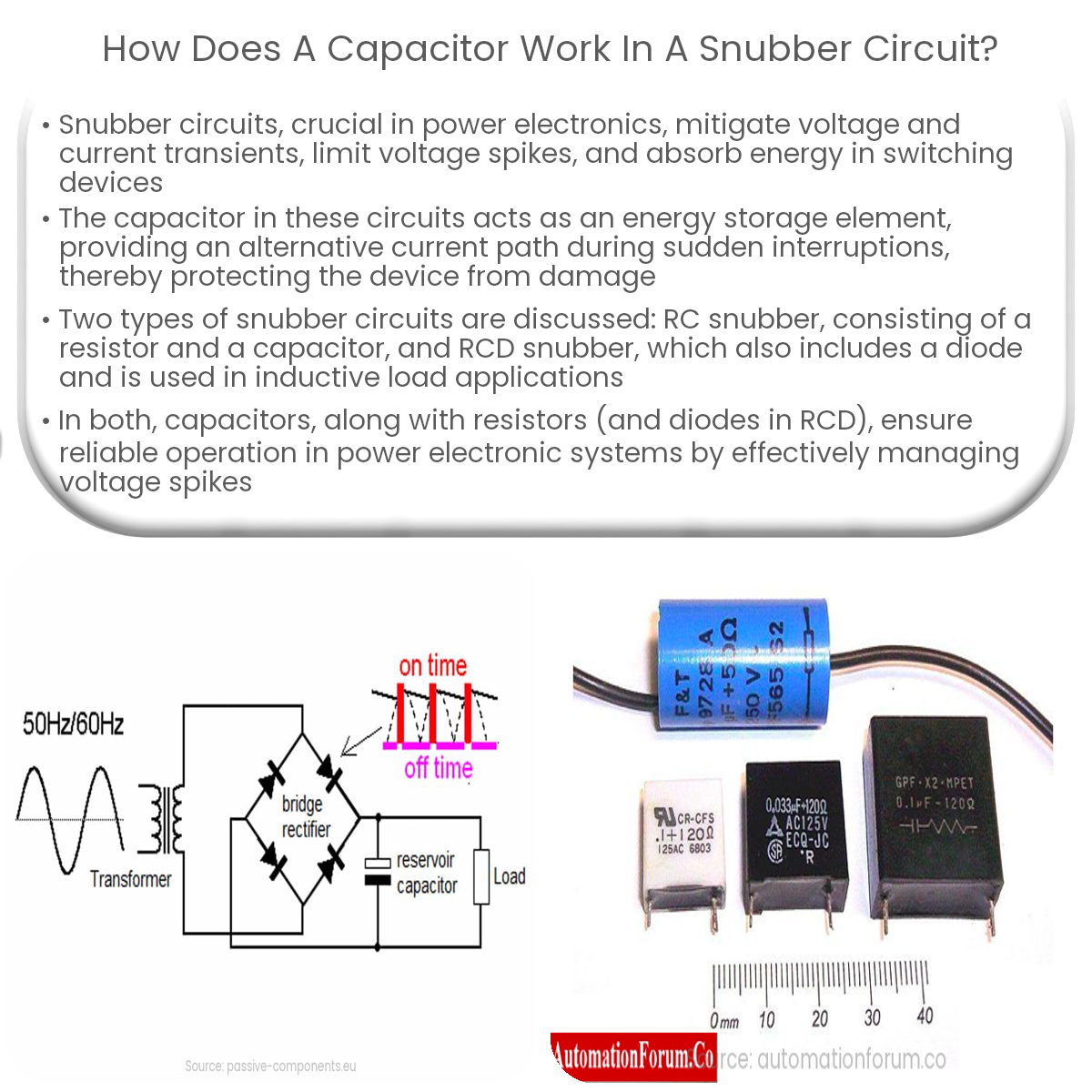In a snubber circuit, the capacitor absorbs voltage spikes, mitigates voltage overshoots, and provides an alternative current path to protect switching devices.
Introduction to Snubber Circuits
A snubber circuit is a vital component in power electronics designed to reduce voltage and current transients, limit voltage spikes, and absorb energy in switching devices. Snubber circuits are typically comprised of a capacitor, resistor, and sometimes an inductor. The capacitor plays a crucial role in the snubber’s operation, as described below.
Role of Capacitor in Snubber Circuits
The capacitor in a snubber circuit functions as an energy storage element, absorbing voltage spikes and mitigating voltage overshoots. When a switching device, such as a transistor or thyristor, is turned off, the sudden interruption of current flow can cause voltage transients due to parasitic inductance and capacitance in the circuit. The capacitor in the snubber circuit provides an alternative current path, allowing the energy to be transferred safely without causing damage to the switching device or generating electromagnetic interference (EMI).
RC Snubber Circuit
An RC snubber circuit consists of a resistor (R) and a capacitor (C) connected in series. The RC snubber is usually connected across the switching device to mitigate voltage transients. When the switch turns off, the capacitor initially behaves like a short circuit, providing a path for the current to flow. As the capacitor charges, the voltage across it increases, and the current decreases. The resistor in the RC snubber circuit is essential to dissipate the energy stored in the capacitor once the transient event is over, ensuring that the snubber circuit is ready for the next switching cycle.
RCD Snubber Circuit
An RCD snubber circuit includes a resistor (R), capacitor (C), and diode (D). This type of snubber circuit is commonly used in inductive load applications, such as inductive motors or transformers, where the energy stored in the load’s magnetic field can generate high voltage spikes when the switch turns off. In the RCD snubber, the diode provides a path for the inductive load’s energy to be transferred to the capacitor, limiting the voltage spike. The resistor then dissipates this energy as heat, ensuring safe operation of the switching device.
Conclusion
In summary, the capacitor plays a critical role in snubber circuits, providing an alternate current path to protect switching devices from voltage transients and overshoots. By using capacitors in combination with resistors and diodes, snubber circuits can effectively limit voltage spikes and ensure reliable operation in power electronic systems.


